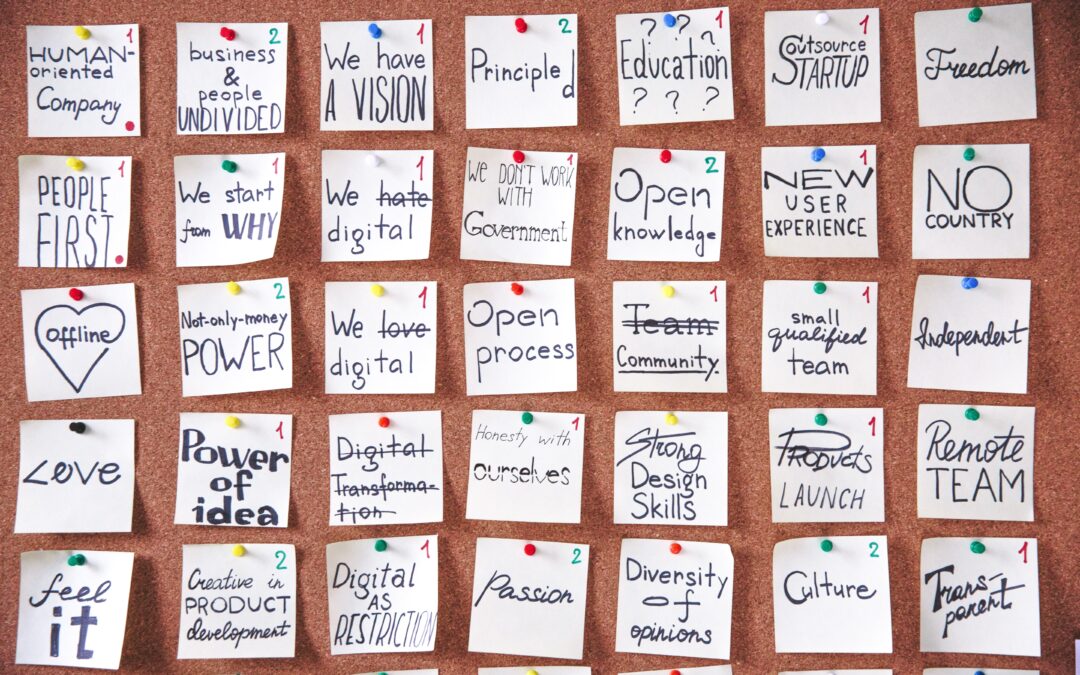Because money plays such an important role in our lives, we must establish clear financial priorities.
While money won’t bring us happiness, a lack of money can most certainly bring stress and anxiety. It’s also really hard to think about the big picture and to plan our futures when we’re drowning in debt, living paycheck-to-paycheck, and struggling to pay our monthly bills.
Taking a business-like approach to our personal finances will help us set and keep our financial priorities. When we take the time to get clear on what’s important to us and create a structure around our personal finances, we position ourselves for long-term financial success.
If we’re not clear on what’s most important to use, we are at risk of making poor choices and squandering our resources.
Every choice we make has a consequence. When we choose to do one thing, we choose to not do something else. The better we can become at setting our financial priorities and following them, the better off we’ll be.
My goal is to give you the tools you need to think about and establish your financial priorities. As a financial advisor, I’ve been helping people do that for over 20 years. I’m honored to be named to Investopedia’s list of the top 100 financial advisors many years running.
Here’s what we’ll cover:
- Why have financial priorities?
- Setting your financial priorities
- Aligning your finances to your priorities
- Keeping your financial priorities
Let’s get started.
Why have financial priorities
We have a finite amount of money.
When we choose to do one thing, we choose to not do another. Money has time value, meaning the longer we wait to pursue a financial goal, the harder it becomes to achieve. Therefore, resources devoted anywhere other than our top priorities may be mis-allocated. That’s why it’s so important to decide what truly matters.
Setting and keeping your financial priorities will get you on the path to financial security, which will give you peace of mind. From there, you’ll be free to pursue financial prosperity; and that’s ultimately what I want for you.
Setting your financial priorities
To set your financial priorities, you need to get clear on your goals and values. Your goals are where you want to go, and your values are how you’ll get there.
When setting financial goals, I encourage you to think about them in terms of time horizon. Your short-term goals are what you want to accomplish over the next three years. Mid-term is what you want from three to 10 years from now. And your long-term goals are what you’d like to accomplish 10+ years from now.
Once you’ve written them down, determine which are the three most important. From there, determine what actions you take immediately to achieve them. In service of helping you in this process, you can access our Goals course for free.
Your values are the lens through which you see the world and how you decide. They help you make judgments and prioritize what to do and what not to do. Your values determine where you live, how you vote, and what you spend your money on. Therefore, clarifying yours is a worthwhile exercise. To help you clarify yours, you can access our Values course for free as well.
Aligning your finances to your priorities
The next step is looking at how you’re currently using your money. The idea is to align your behavior with your priorities. To do that, you need to review your cash flow and your budget.
Optimize your cash flow and spending
Most people don’t know how much they earn and how much they spend. You need to know these things. Audit your cash flow and spending by reviewing the last 12 months. You do this by logging into your financial accounts and looking at every transaction. Should you find you’re paying for things that aren’t aligned with your priorities, stop paying for them.
Optimize your budget
Your budget is your plan for your money and it tells you what your priorities are. Go through your current budget and look for opportunities to bring your allocations more in line with your priorities. If you’re not currently keeping a budget, this is a great opportunity to build one from scratch.
You can read this post on budgeting, or check out our Get a Budget course.
Keeping your financial priorities
You know what your priorities are. Now it’s a matter of honoring and following them. We do this both by focusing on what we want and by minimizing or eliminating what we don’t want. You can put out a fire by pouring water on it, or by starving it of oxygen.
With priorities, you can eliminate things you’re currently doing that aren’t aligned (like eating out 7 days a week), and you can recognize when new things come up (like choosing to rent a more affordable Airbnb instead of staying in an expensive hotel). While it may not be possible to eliminate everything that isn’t aligned with your priorities, we can work to minimize them as much as possible.
Using a cost benefit-analysis when making financial decisions will help you in this process. Here are the steps for completing one:
Step 1. Identify the project scope. Start by defining the question or problem you’re trying to solve. We’ll use your summer vacation as an example. Where will you go? Will you do a staycation, drive to another state, or travel internationally? What are the benefits you’ll receive? From there, you’ll take into consideration all required resources.
Step 2. Determine the costs. There are four costs to take into consideration:
- Direct costs- Expenses directly related to your project (Gas, plane tickets, hotels, food).
- Indirect costs- Fixed expenses (Time away from work so potentially reduced income).
- Intangible costs- Costs difficult to measure directly (Time away from school, extracurricular activities, a break in habits and routines).
- Opportunity costs- Costs of choosing one thing over another (A staycation will cost less money, but the benefits of experiencing international travel and different cultures is also valuable).
Step 3. Give each cost and benefit a dollar value. Create your full list of costs and benefits. While it is difficult to assign a dollar value to intangible costs, make your best estimate.
Step 4. Compare your findings. If the benefits outweigh the costs, you have a business case for moving forward. If they don’t, you may decide to not pursue the project.
Using this straightforward process can help you decide if spending money on something makes sense, or it doesn’t.
Closing
Setting and keeping your financial priorities will go a long way in helping you find financial security and move toward financial prosperity.
Set and live by your priorities, and no one else’s. You’ve got one opportunity at life, and we don’t have time to waste. Get started.
If you’re ready to take control of your financial life, check out our DIY Financial Plan course.
We’ve got three free courses as well: Our Goals Course, Values Course, and our Get Out of Debt course.
Connect with one of our Certified Partners to get any question answered.
Stay up to date by getting our monthly updates.
Check out the LifeBlood podcast.
LifeBlood is supported by our audience. If you purchase through links on our site, we may earn an affiliate commission. Learn more.

